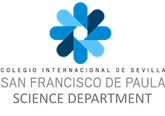Lab Sessions
2019-2020
Remember: All graphs must be done by hand with pencil and paper, and handed in with your lab reports.
Session 6
Tasks
|
2nd Trimester Criteria BC
|
3rd Trimester Criteria BC
|
|
2nd Trimester Criteria D
|
3rd trimester Criteria D
|
Help with Lab Work
Here are some things to help you complete lab activities.
|
| ||||
| scatter_graphs_questions.docx |

